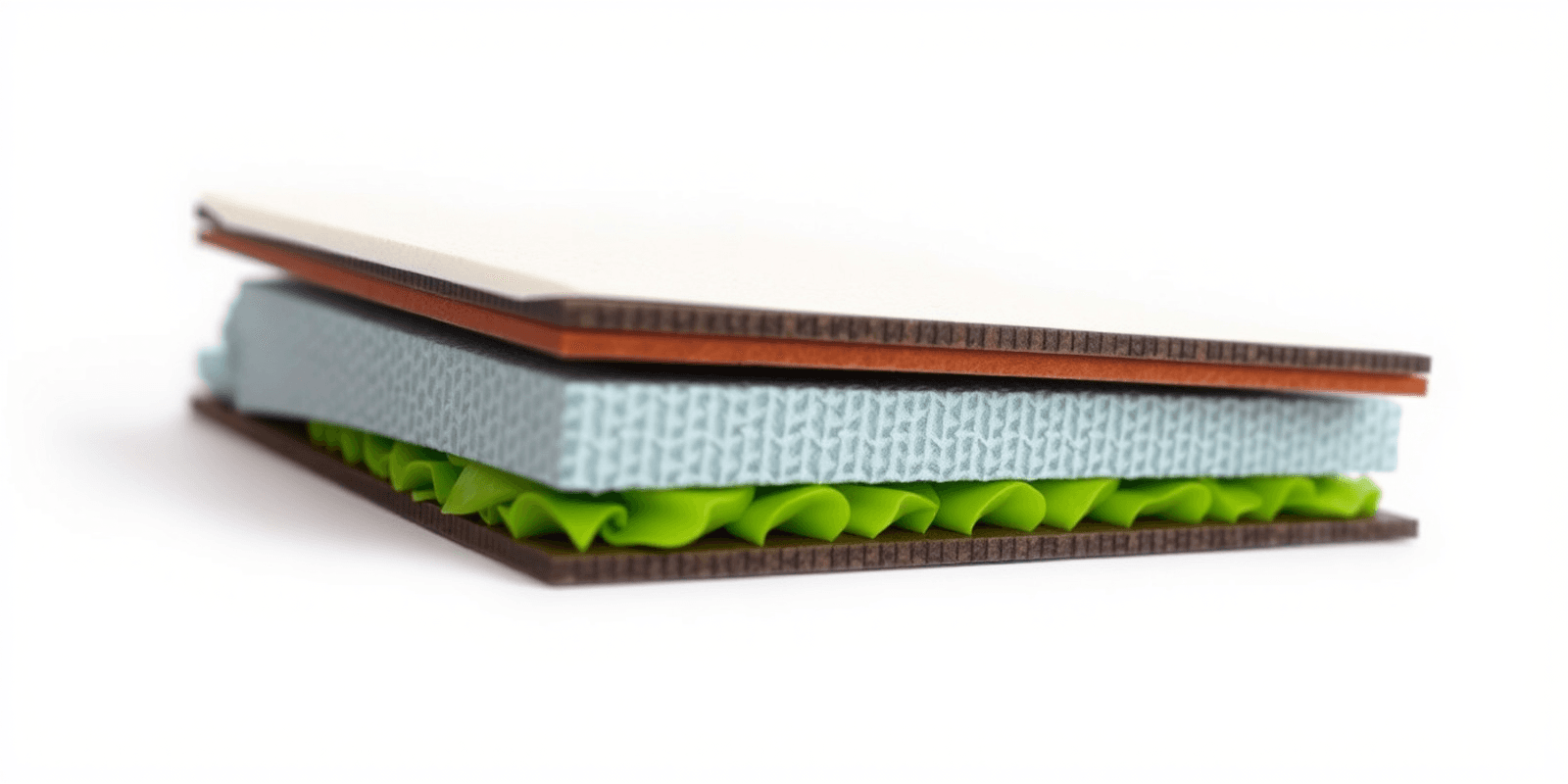Physical Address
304 North Cardinal St.
Dorchester Center, MA 02124
Physical Address
304 North Cardinal St.
Dorchester Center, MA 02124

Explore how sandwich composite materials are revolutionizing the engineering landscape with their unique properties and applications across various industries.
In the ever-evolving landscape of modern engineering, sandwich composite materials have emerged as a game-changer, offering unparalleled structural advantages and versatility. These materials, which consist of two thin, strong outer layers (skins) bonded to a lightweight core, are finding applications in diverse sectors such as aerospace, automotive, and construction. This article delves into the different types of sandwich composites, their unique properties, and how they are revolutionizing these industries through innovative applications.
Sandwich composite materials are engineered structures that combine the benefits of multiple materials to achieve superior performance. The basic structure consists of a core material sandwiched between two face sheets or skins. The core provides stiffness and reduces weight, while the skins provide strength and durability. This combination results in a material that is both lightweight and strong, making it ideal for a wide range of applications.
There are several types of sandwich composites, each with its own unique properties and applications:
The primary advantage of sandwich composite materials is their ability to achieve high strength and stiffness at a fraction of the weight of traditional materials. This makes them ideal for applications where weight reduction is critical, such as in aerospace and automotive design. Additionally, the core material can provide additional benefits such as thermal insulation, sound dampening, and vibration absorption.
One of the most significant benefits of sandwich composites is their ability to reduce weight without compromising on strength. In the aerospace industry, for example, every kilogram saved can result in significant fuel savings and increased payload capacity. Similarly, in the automotive sector, lighter vehicles can improve fuel efficiency and reduce emissions.
Many core materials, such as foam and balsa wood, provide excellent thermal and acoustic insulation. This makes sandwich composite materials ideal for applications where temperature control and noise reduction are important, such as in the construction of buildings and vehicles.
The versatility of sandwich composite materials has led to their widespread adoption in various industries. Let’s explore some of the key applications in aerospace, automotive, and construction.
In the aerospace industry, sandwich composite materials are used extensively in the construction of aircraft and spacecraft. For example, the Boeing 787 Dreamliner uses carbon fiber reinforced plastic (CFRP) sandwich panels in its fuselage and wings, resulting in a 20% reduction in weight compared to traditional aluminum designs. This weight reduction translates into significant fuel savings and lower operating costs.
The automotive industry is also embracing sandwich composite materials to improve vehicle performance and reduce environmental impact. For instance, BMW’s i3 electric car features a passenger cell made from CFRP sandwich panels, which provides exceptional strength and crash protection while keeping the vehicle lightweight. This design not only enhances the driving experience but also extends the range of the electric vehicle.
In the construction industry, sandwich composite materials are used in the fabrication of building panels, roofing, and flooring. These materials offer excellent thermal and acoustic insulation, making them ideal for creating energy-efficient and comfortable living spaces. For example, Kingspan, a leading manufacturer of insulated panels, uses foam core sandwich panels in their products, which provide superior insulation and fire resistance.
Several case studies highlight the innovative use of sandwich composite materials in real-world applications. These examples demonstrate the potential of these materials to solve complex engineering challenges and drive innovation.
The Airbus A350 XWB is a prime example of the use of sandwich composite materials in commercial aviation. The aircraft features extensive use of CFRP sandwich panels in its wing and fuselage, resulting in a 25% reduction in weight compared to similar-sized aircraft. This weight reduction, combined with advanced aerodynamics, contributes to a 25% reduction in fuel consumption and CO2 emissions. The A350 XWB has set new standards for efficiency and sustainability in the aviation industry.
Tesla’s Model S electric car incorporates sandwich composite materials in its battery pack and body structure. The battery pack is protected by a CFRP sandwich panel, which provides excellent impact resistance and thermal management. This design not only enhances the safety of the vehicle but also optimizes the performance of the battery, contributing to the Model S’s impressive range and acceleration.
The Edge, a sustainable office building in Amsterdam, is another example of the innovative use of sandwich composite materials. The building features a facade made from foam core sandwich panels, which provide excellent thermal insulation and contribute to the building’s energy efficiency. The Edge has been awarded the highest BREEAM (Building Research Establishment Environmental Assessment Method) rating, making it one of the most sustainable buildings in the world.
Sandwich composite materials have proven to be a versatile and innovative solution in modern engineering, offering a unique combination of strength, lightweight, and additional benefits such as thermal and acoustic insulation. Their applications in aerospace, automotive, and construction have demonstrated their potential to drive innovation and improve performance. As technology continues to advance, we can expect to see even more exciting developments in the use of sandwich composite materials, further cementing their role in shaping the future of engineering.